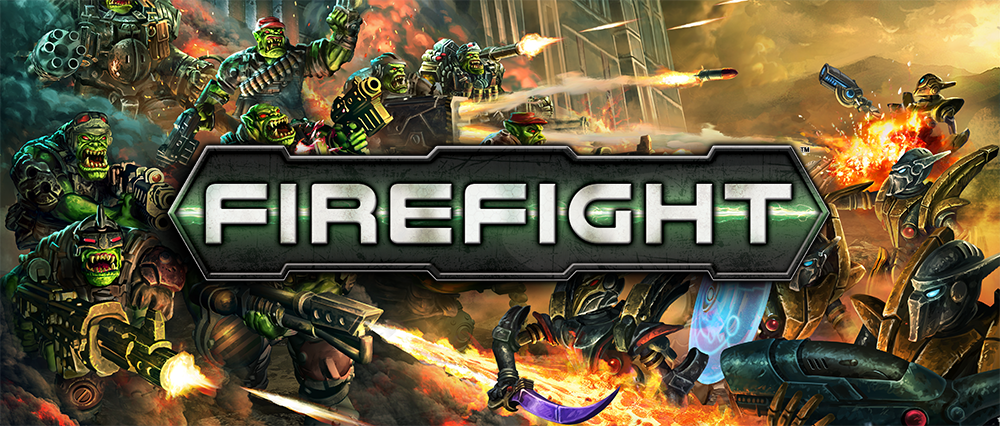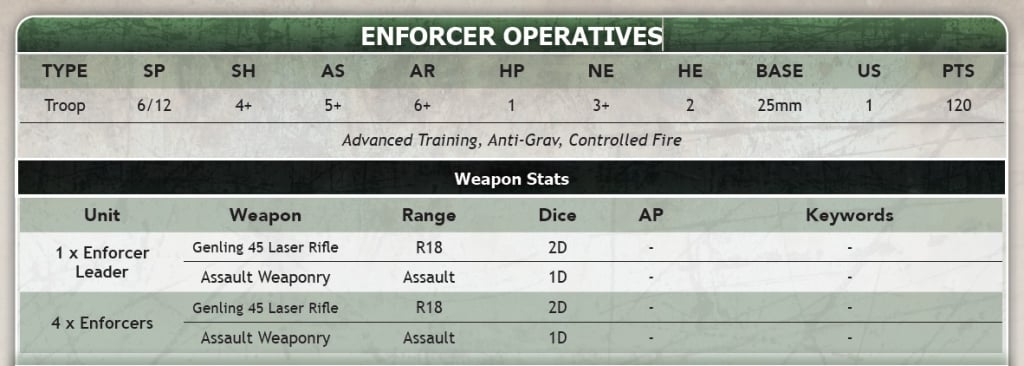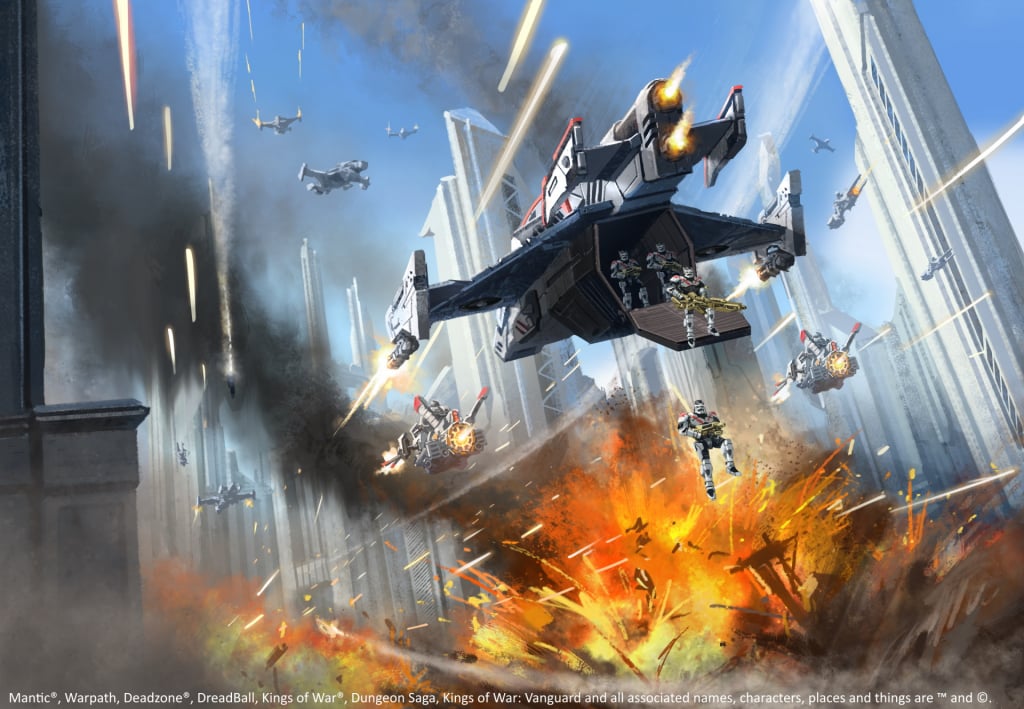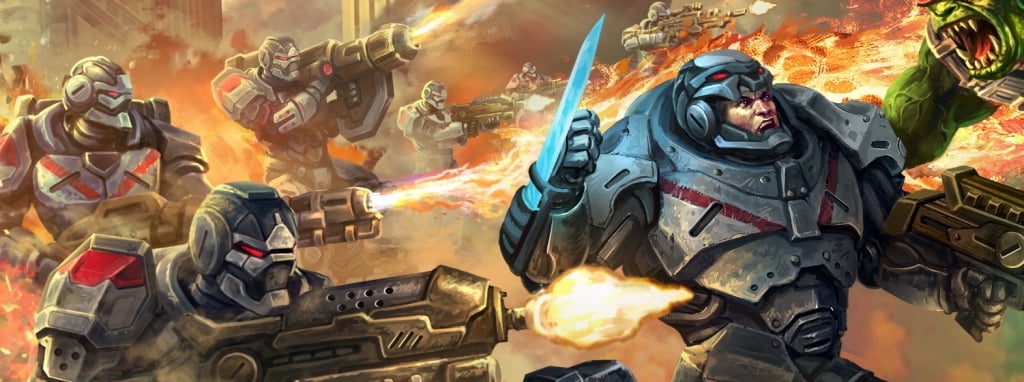How to Play Firefight: Second Edition – Shooting
23rd Mar 2022
Rob Burman

Welcome wannabe Firefight commanders to another of our rules blogs! So far we’ve covered the importance of Command Points and how we’ve kept the movement rules nice and simple to keep things fast. Today then we’re getting onto the juicy stuff: shooting.
A little like the rules for movement, which have been designed to keep the action coming thick and fast, shooting follows a very similar path. You see, rather than having to work out if all the individual models in your squad can see the target, you only have to worry about whether the Leader model can see them.
You start by drawing Line of Sight from the Leader model to the base of the closest model in the enemy unit. Then all weapons in the shooting unit that have a listed range equal to or greater than the distance measured to the target, are eligible to fire.

For example, if you’re taking aim with your Enforcer Operatives, then the standard weapon load out is the Genling 45 Laser Rifle, which has a range of 18-inches. You measure from your Leader and confirm that a bunch of dirty Veer-myn are 14-inches away. This means that any Enforcer in the unit can shoot away to their heart’s content.
“Hang on though, Mr. Blog Writer, what happens if my Leader is EXACTLY 18-inches away, but he’s stood at the front of the unit, so the other members of the squad are more than 18-inches away… WHAT HAPPENS THEN? NOT SO CLEVER NOW!”
Oh, it’s our old friend Anonymous Blog Reader. Well Anonymous Blog Reader, for the sake of keeping things fast and furious – remember we didn’t want you faffing about with tape measures too much – you’re still allowed to fire with those Enforcers that are slightly outside of the 18-inch range. After all, what’s a couple of inches between friends, right?
KEEP ON ROLLING
Once you’ve checked you’ve got the range (even if it’s only for your Leader) you then work out how many dice you need to roll. For example, going back to the Enforcer Operatives, a unit of five Operatives shooting with the Genling 45 would produce 2 D8s each, so in total you’ll be rolling 10 dice.

Then it’s simply a case of rolling all the dice and comparing them to your unit’s SH stat. Each dice that matches or beats the target number is considered a hit. Next, you grab those hits and roll to damage your opponent - a concept that will be familiar to anyone that’s played Kings of War. In order to damage the enemy, you need to match or beat their AR value. If any of your weapons have AP (armour piercing) then the AR value of the enemy is reduced by that amount, e.g. if your opponent has AR 6+ but you have AP1, then you’ll require 5+ to wound. Simples!
Sometimes you may have a unit that has different weapon profiles in, i.e. some with armour piercing and some without. In these situations we recommend using different coloured dice so you can keep track of which ones have any special effects.
BRING OUT YOUR DEAD!
Damage is now allocated to models in the enemy unit. When a model has been allocated as many points of damage as it has Health Points (HP) on its profile, the model is removed from play (dead). Damage must be allocated to remove whole models before allocating to another model. Any excess points of damage that cannot remove a whole model are marked next to the unit and are added to future damage suffered. Damage counters are provided to help track this.

Models that are allocated damage and removed from a unit are determined by the player using that unit in their Strike Force. Models removed from the unit should be first taken from models within Clear or Partially Blocked LOS. If all models within Clear or Partially Blocked LOS, except the leader, are removed then further models may be removed outside of LOS until all damage has been applied.
The Leader model is always the last model to be removed.
So, there you go! As you can see, we’ve kept Shooting as fast as possible thanks to using the Leader as the only measuring point, rather than having to measure from every single model. And we’ve even given you a bit of wiggle room with weapons that are slightly out of range. How generous.



